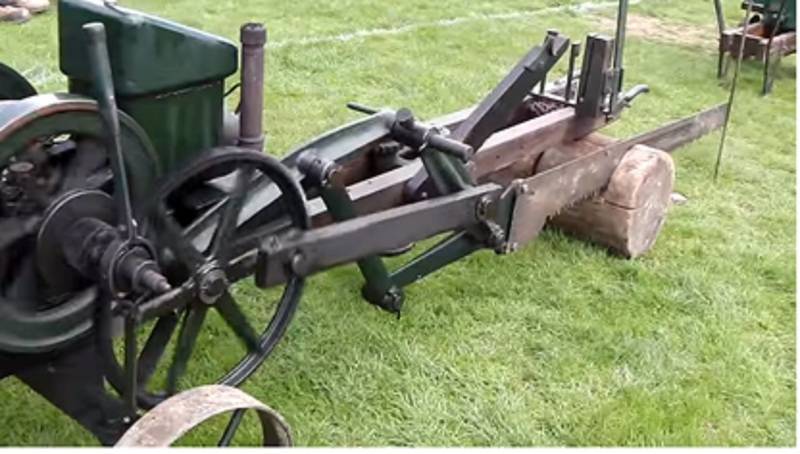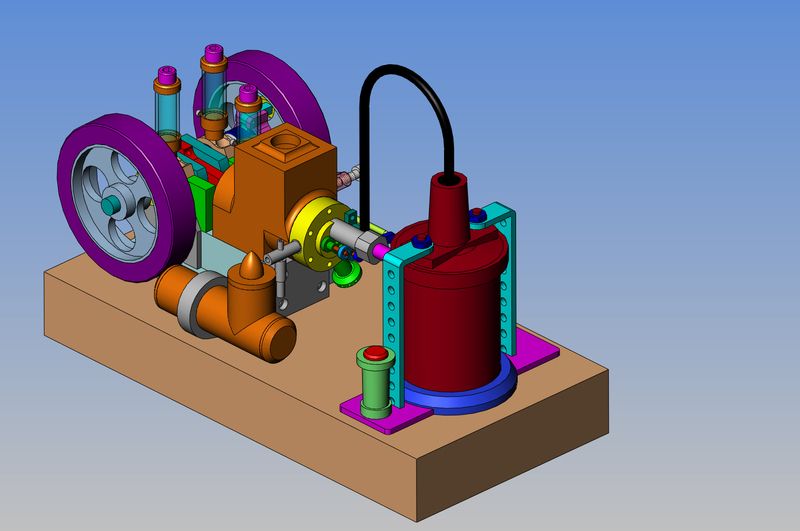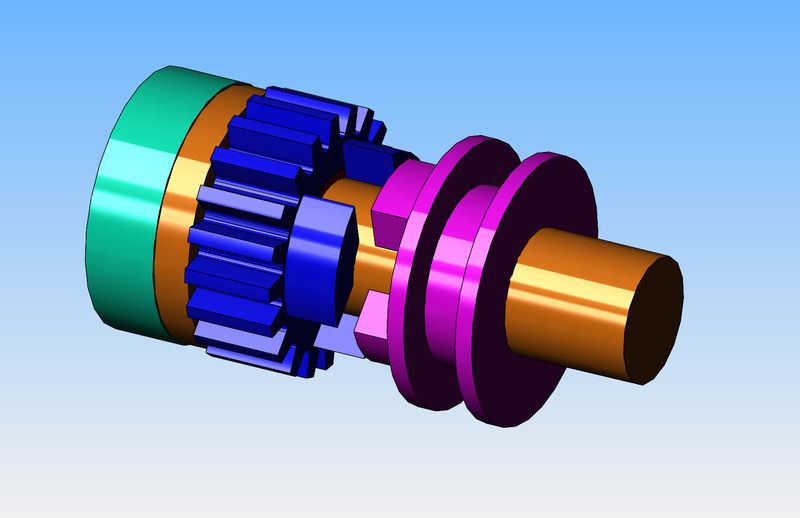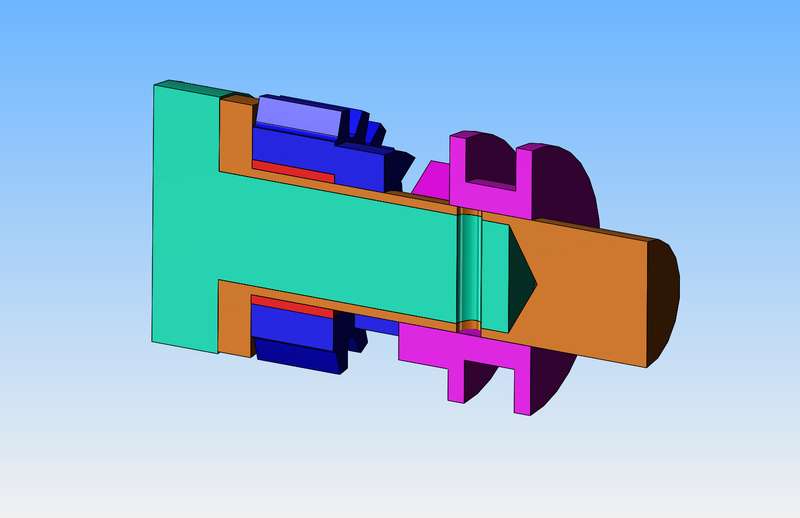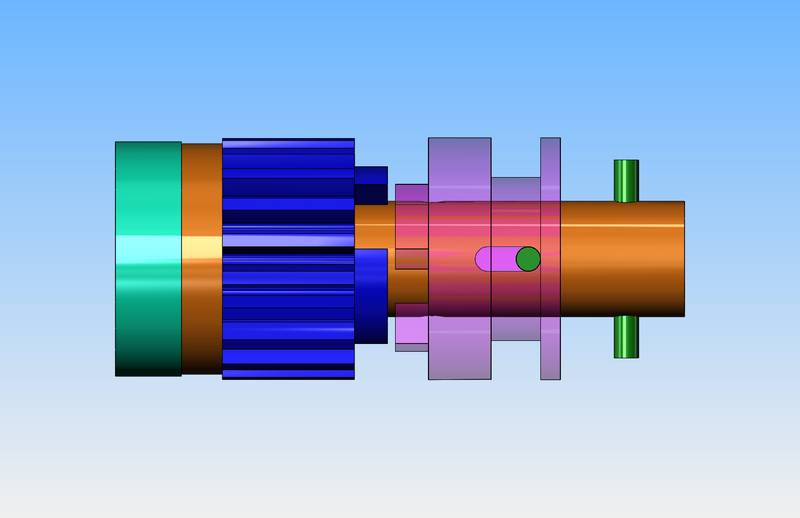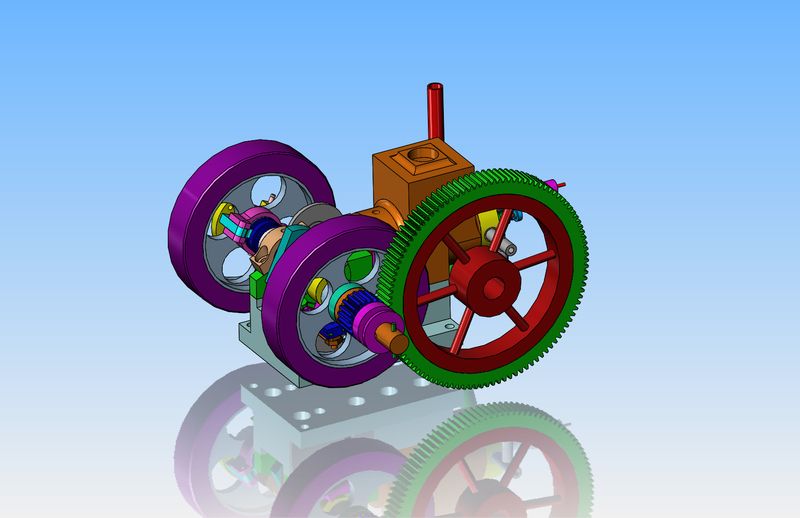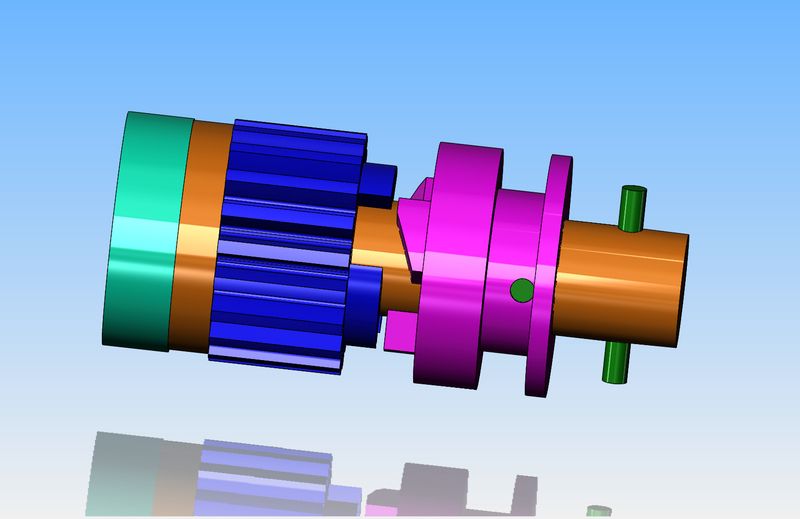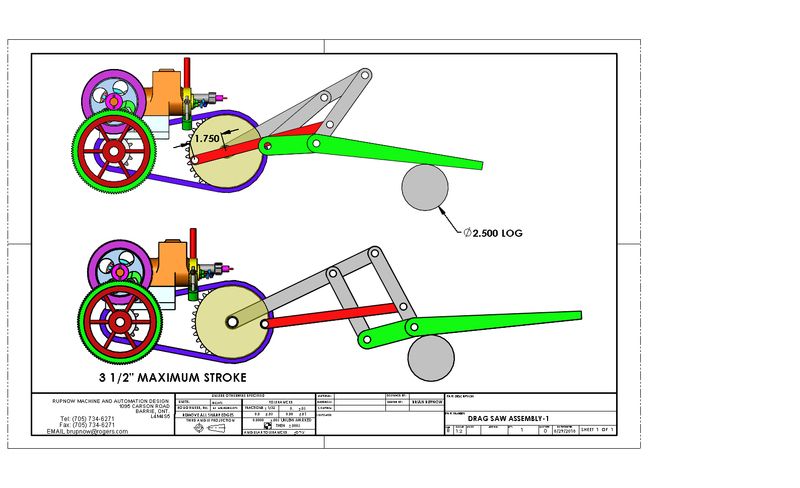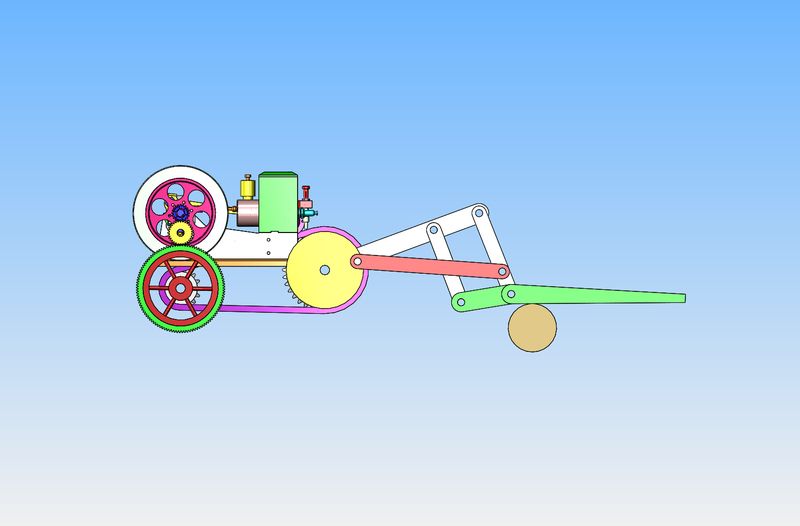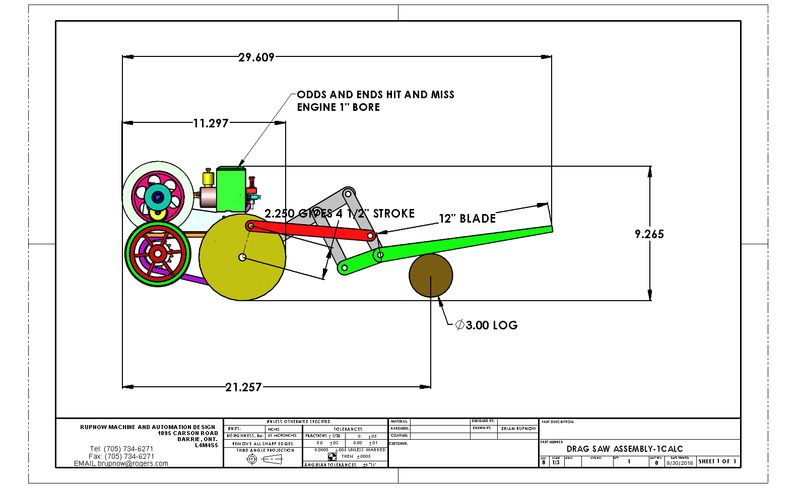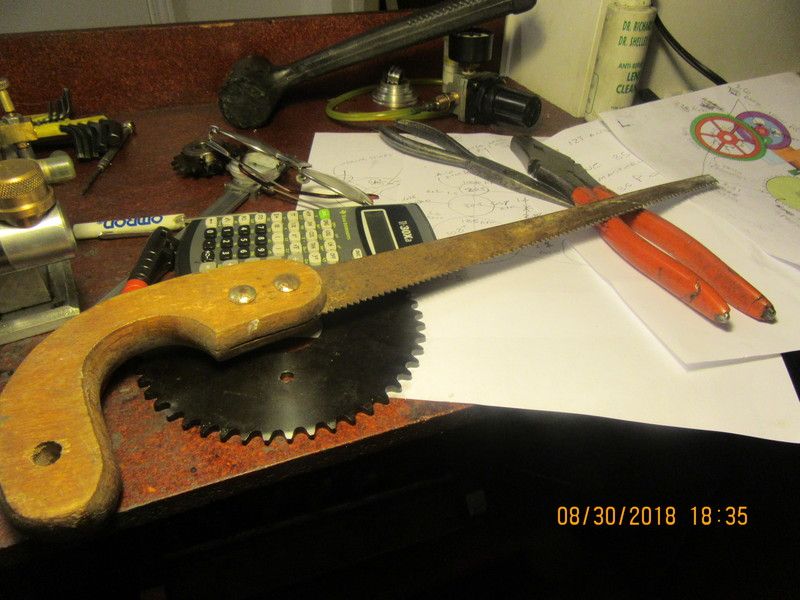I am going to build a model drag saw. The power for this saw will come from the second i.c. engine I ever built--The Kerzel hit and miss engine. There are so many things that I don't know about a drag saw that it makes my head vibrate, but I am a fast learner. I am going to use a driving mechanism similar to the one in the attached picture. One of the first things I have to design is a "dog clutch" which enables me to shift a lever and put the engine "out of gear" so that I don't have to shut the engine down to stop the saw blade moving. I have at one time or other built everything in a drag saw (on other machinery) except for a dog clutch. Since I have the capability to cut my own gears, this saw will have a gear drive instead of a sprocket and chain. If you like this sort of thing, then follow along. Parts of this story may be boring, but parts of it will be something new.
